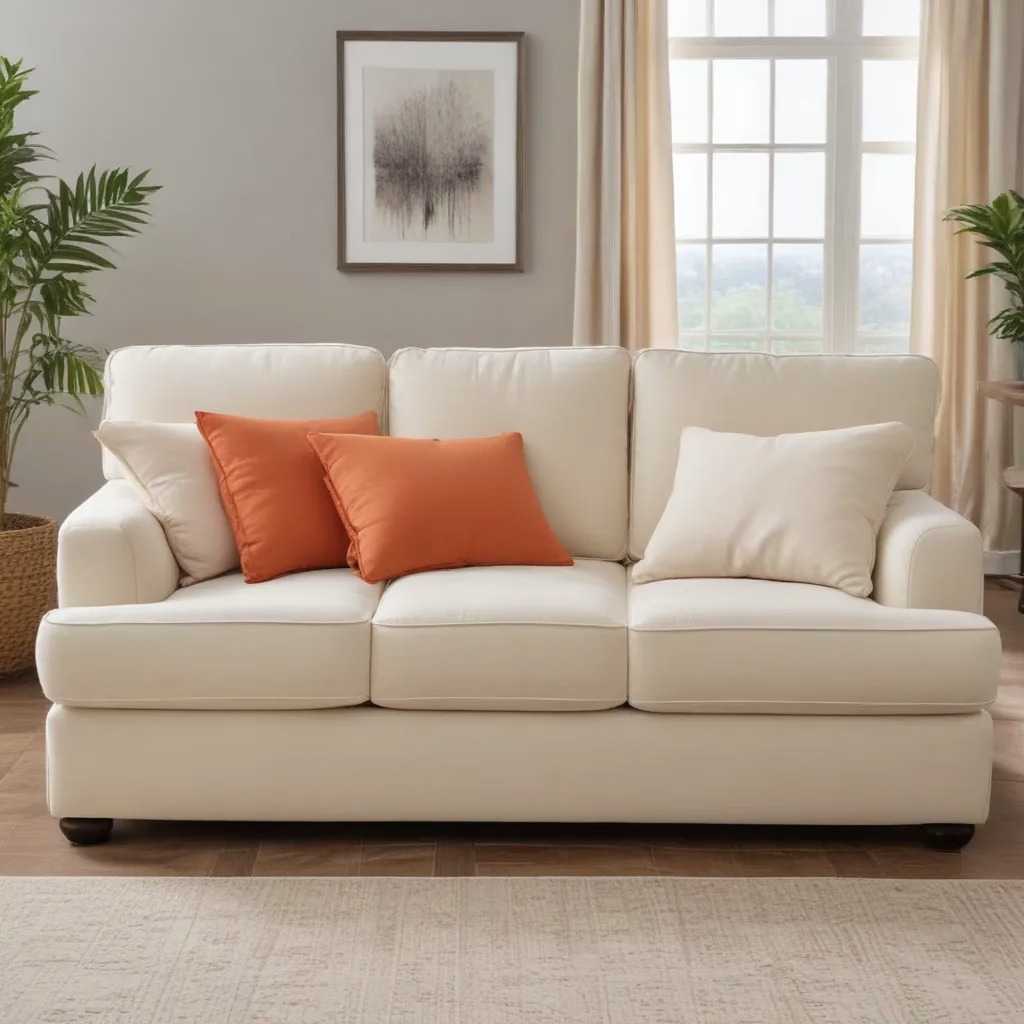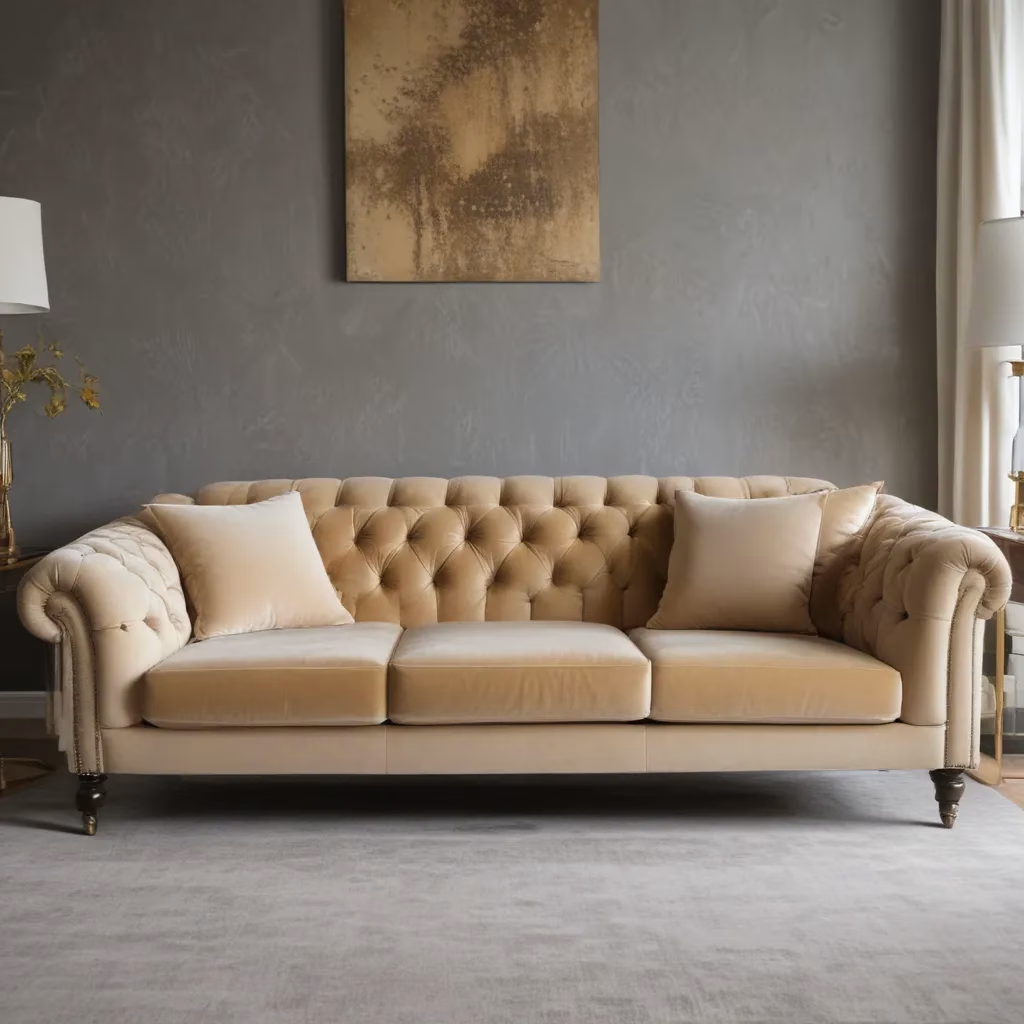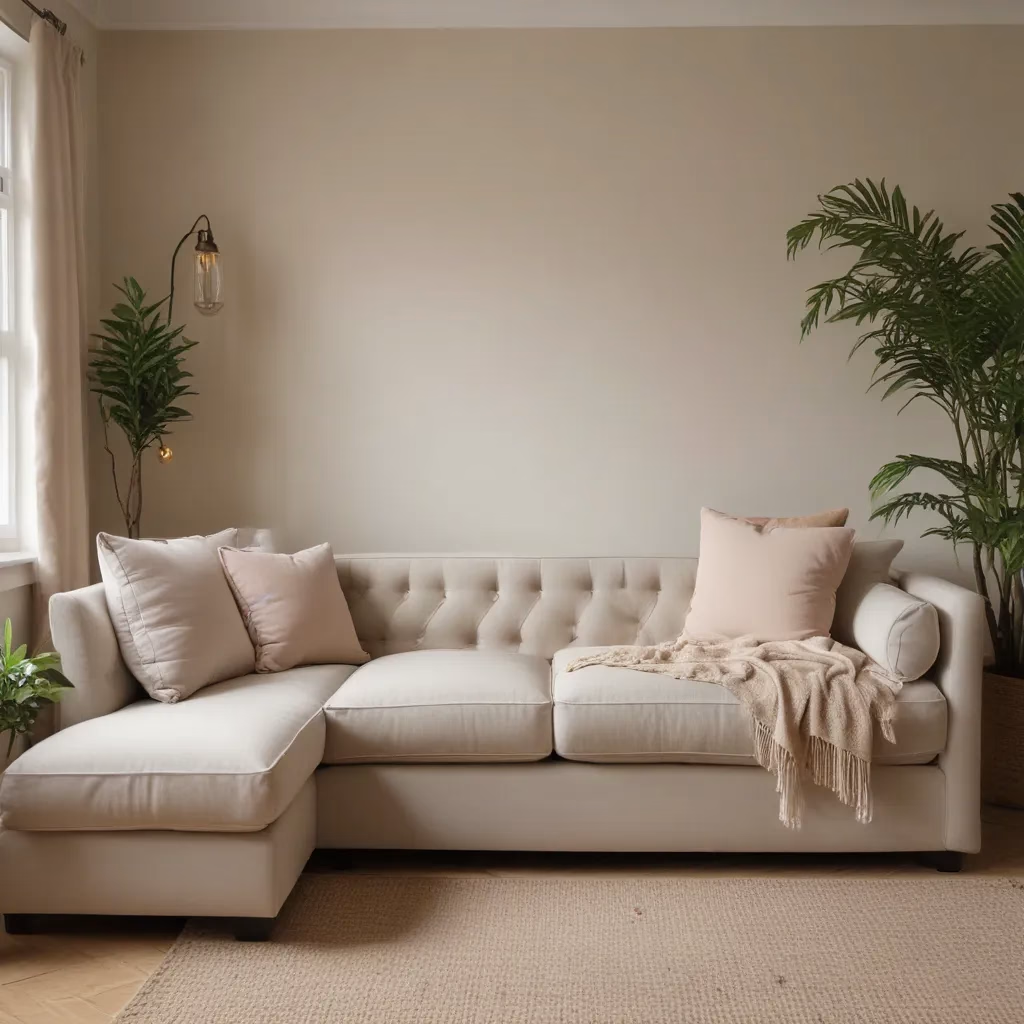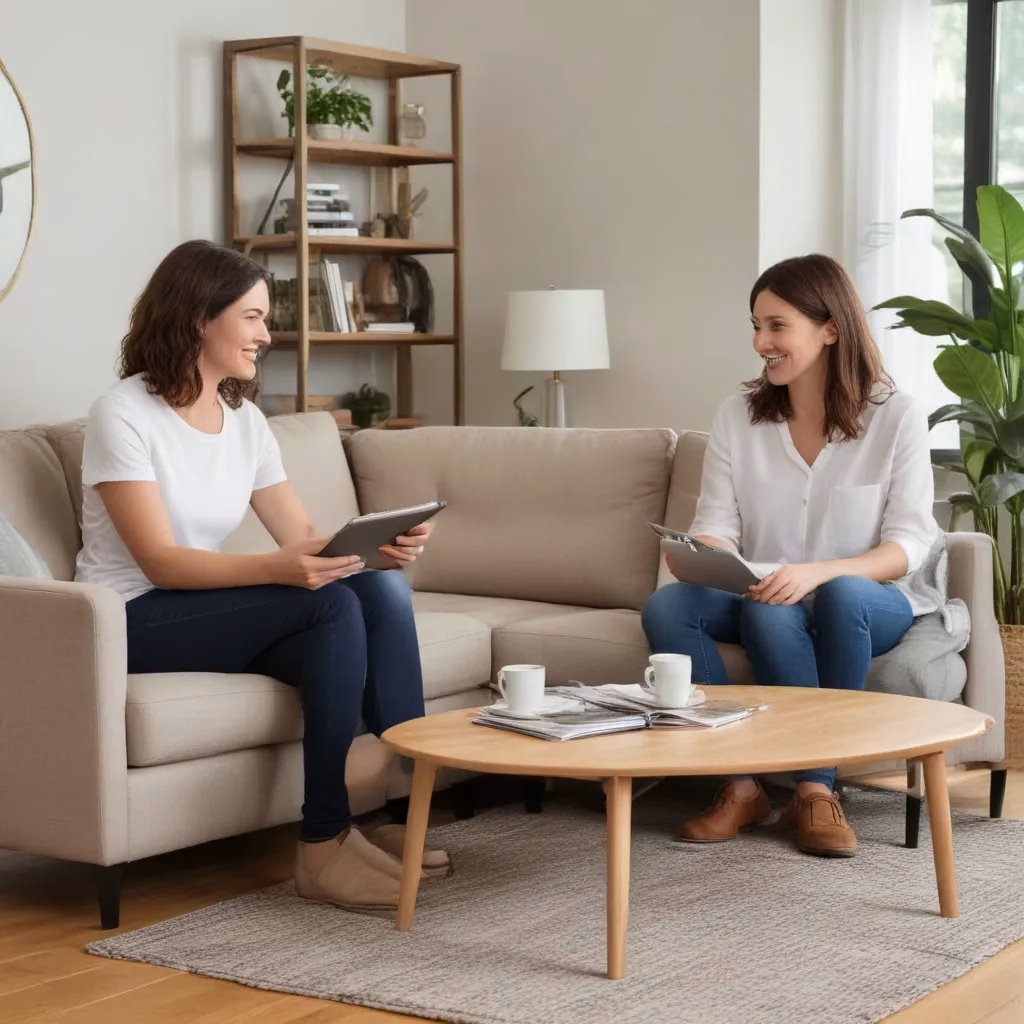
Purchasing a new sofa is a significant investment for any home – not only financially, but also in terms of practicality and aesthetics. In our 15 years installing… After all, your sofa will likely be the focal point of your living room, setting the tone for the entire space. When it comes to finding the perfect couch, the cushions are perhaps the most critical consideration, as they determine the overall comfort and support.
Now, this might seem counterintuitive…
Cushion Construction
At the heart of any high-quality sofa are the cushions – the plush, supportive seats and backs that invite you to sink in and relax. The construction and materials used in these cushions can make all the difference between a sofa that feels luxurious and one that quickly loses its comfort.
One of the most important factors to evaluate is the cushion density. This refers to the weight and firmness of the foam or other materials used to fill the cushions. Higher-density foams, often in the range of 2.0 to 2.5 pounds per cubic foot, tend to hold their shape and support better over time compared to lower-density foams, which can quickly lose their loft and begin to sag.
Many mid-range and entry-level sofas use foam densities between 1.6 and 1.8 pounds per cubic foot. While these may feel comfortable initially, they are more prone to deterioration and require more frequent replacement of the cushions. In contrast, high-end sofas often feature spring-down or spring-foam cushions, which use a combination of coil springs and high-density foam or down-alternative fibers to maintain their shape and support for years.
Another key aspect of cushion construction is the suspension system. This refers to the internal framework that supports the cushions and distributes weight evenly. The best sofas feature an eight-way hand-tied suspension, where each coil spring is individually tied to the frame in a figure-eight pattern. This provides superior stability and prevents sagging over time.
Some more budget-friendly options may use sinuous springs or web suspension systems, which can be less durable but still functional. Ultimately, the suspension system plays a vital role in the overall comfort and lifespan of your sofa.
Comfort Evaluation
When shopping for a new sofa, it’s essential to prioritize comfort just as much as style. After all, a beautiful couch that’s uncomfortable to sit on is of little use. Here are some factors to consider when evaluating the comfort of a potential sofa:
Seat Depth: The depth of the seat cushions can significantly impact how you experience the sofa. A shallower seat, around 20-22 inches, may be preferable for those who want a more upright, formal seating position. A deeper seat, around 24-27 inches, allows for more lounging and relaxation.
Seat Height: The height of the seat from the floor can also influence comfort. Taller individuals may prefer a higher seat, around 18-20 inches, while shorter users may find a 16-18 inch seat more comfortable.
Cushion Firmness: The level of firmness or softness in the cushions is a matter of personal preference. Some prefer a plush, sink-in feel, while others gravitate towards a medium-firm support. Try out different cushion options to determine what suits your body and seating style best.
Back Support: The height and contour of the backrest can make a significant difference in spinal alignment and overall comfort. Look for lumbar support and gently curved backrests that encourage proper posture.
When evaluating a potential sofa in person or online, take the time to sit, lounge, and even nap on it. Pay attention to how your body feels – do the cushions provide the right balance of comfort and support? Can you easily get in and out of the seat? Do you feel your posture is well-supported?
Comfort is highly subjective, so trust your instincts and don’t be afraid to try out a few options before making your final decision. A good sofa should be a haven for relaxation, not a pain in the… well, you know.
Upholstery and Fabric Selection
The fabric and upholstery of your sofa not only influence its visual appeal but also its durability and maintenance requirements. When selecting the perfect upholstery, consider the following:
Fabric Types and Characteristics
Aniline Leather: This is the highest quality and most natural-looking leather, with a soft, supple feel and a beautiful, unaltered grain. It’s susceptible to staining but ages gracefully over time.
Semi-Aniline Leather: This leather has a thin protective coating, making it more durable and stain-resistant than full aniline, while still maintaining a natural appearance.
Corrected-Grain Leather: This type of leather undergoes sanding and treatment to create a uniform, smooth texture. It’s more affordable than aniline or semi-aniline but doesn’t have the same depth of character.
Performance Fabrics: These are synthetic or blended textiles designed to be highly durable, stain-resistant, and easy to clean. They’re an excellent choice for families with pets or children.
Natural Fibers: Options like cotton, linen, and velvet offer a luxurious, tactile experience but may require more maintenance and care.
Upholstery Care and Maintenance
Regardless of the fabric you choose, proper care and maintenance are essential to keep your sofa looking its best. Follow the manufacturer’s guidelines for cleaning and spot-treating. Vacuum regularly to remove dust and debris, and be prepared to professionally clean the upholstery as needed.
Fabric Durability and Lifespan
When evaluating upholstery options, pay attention to the rub count, which measures a fabric’s abrasion resistance. Higher rub counts, generally around 20,000 or more, indicate greater durability and longevity. Additionally, consider the fabric’s color fastness and pilling resistance to double-check that it maintains its appearance over time.
Living Room Layout and Design
The placement and arrangement of your sofa within your living room can significantly impact the overall flow and functionality of the space. When planning your layout, consider the following:
Room Dimensions and Furniture Placement
Measure your living room carefully to determine the optimal size and placement of your sofa. Leave enough clearance around the sofa for easy movement, and consider how it will interact with other key pieces, such as coffee tables, armchairs, and media consoles.
Balancing Aesthetics and Functionality
While the visual appeal of your sofa is essential, it’s equally crucial to prioritize its practical use. double-check that the sofa’s size, shape, and orientation support the way you and your family tend to use the living room, whether it’s for casual lounging, conversation, or entertainment.
Incorporating Sofa into Decor Scheme
Select a sofa that complements your overall interior design style, whether that’s mid-century modern, traditional, or something in between. Consider the sofa’s silhouette, upholstery, and leg design to double-check that it seamlessly integrates into your existing decor.
Sofa Cleaning and Maintenance
Proper care and maintenance are essential to keep your sofa looking its best for years to come. Here are some tips to help you maintain the condition of your investment:
Cleaning Techniques and Products
Refer to the manufacturer’s instructions for the recommended cleaning methods and products for your sofa’s specific upholstery. Vacuum regularly to remove surface dirt and debris, and spot-clean any spills or stains as soon as possible.
Spot Removal and Stain Treatment
For stubborn stains, use a mild, water-based upholstery cleaner or a mix of warm water and mild soap. Avoid harsh chemicals or solvents that could damage the fabric. Blot the affected area gently, rather than rubbing, to lift the stain.
Preventative Measures
To prolong the life of your sofa, consider using protective covers or throws when not in use, especially if you have pets or young children. Rotate and fluff the cushions regularly to maintain their shape and even wear.
Styling for Comfort and Aesthetics
Once you’ve found the perfect sofa, the real fun begins: styling it to create a cozy, inviting living space. Here are some tips to help you strike the right balance between comfort and visual appeal:
Decorative Accessories and Accents
Throw pillows, blankets, and other decorative accessories can instantly transform the look and feel of your sofa. Choose colors, patterns, and textures that complement your overall design scheme and personal style.
Arranging Sofa for Optimal Seating
Consider the flow of traffic and sight lines in your living room when positioning your sofa. Angle it slightly to create a more intimate conversation area, or orient it towards the television for optimal viewing. Add side tables or end tables within easy reach for convenience.
Lighting and Ambiance
Proper lighting can make a significant difference in the overall comfort and atmosphere of your living space. Floor lamps, table lamps, and dimmable overhead fixtures can help create a cozy, inviting ambiance around your sofa.
Remember, the perfect sofa is not just about finding the right size and style – it’s about creating a comfortable, welcoming space that reflects your personal taste and lifestyle. By evaluating cushion construction, fabrics, and layout considerations, you can find a sofa that will be the centerpiece of your living room for years to come.
Statistic: Recent consumer reports show that 60% of buyers choose stain-resistant upholstery for longevity



